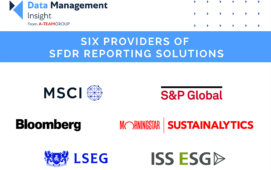Swift is building on last year’s introduction of SwiftRef, its payments reference data utility, with plans to extend web and cloud data services and develop managed services around the data it collects, cleanses, consolidates and publishes. SwiftRef went live in January 2012 and is delivering 194 data files every day to about 1,000 subscribers worldwide.
The SwiftRef business unit and utility were developed after Swift set out a strategy running from 2010 to 2015 that separated its products and messaging services with a view to offering Swift community members and those outside the community additional value propositions. The utility is designed to support payments and treasury transactions, with 80% of its users being financial institutions and 20% corporates. It was also designed to include legal entity identifiers (LEIs) that form part of the global LEI system mandated by the G20.
Patrik Neutjens, head of reference data at Swift, says the utility is gathering, cross-referencing to other entity identifiers and publishing the first pre-LEIs from the first pre-Local Operating Unit, CFTC Interim Compliant Identifiers, or CICIs, from the US Commodity Futures Trading Commission. It will then add LEIs issued by other LOUs as they emerge within the global system.
While SwiftRef can gather and cross-reference LEIs from many sources, Neutjens notes that it is not yet clear how they will be consolidated for consumption. He explains: “It could be that LEIs will be consolidated by one party for the benefit of all, or we may have to consolidate them. The Central Operating Unit of the global LEI system could consolidate LEIs or mandate other organisations to do the task so that consumers can have a consolidated list of LEIs.” Having lost out on an early proposal in the global LEI system development to work with DTCC to set up a single LEI utility for the global LEI system, Neutjens suggests SwiftRef could be one such consolidator.
Neutjens says interest in SwiftRef is usually triggered by regulation, with the Single Euro Payments Area being a key driver, but he also notes that the need to meet regulatory requirements is leading many banks to re-engineer back-office data infrastructure with a view to developing an holistic environment that can support multiple regulations and generate additional revenue streams. “The pressure on the industry to have accurate reference data has grown over the past couple of years as a result of compliance and risk management requirements and costs related to payments. We are now in a phase where accuracy and completeness of data are very important and this is where we can differentiate against competition,” he says.
SwiftRef responded to demand for increased frequency of reference data distribution with a move to daily file updates in April 2013. It is also considering data consumption options through cloud and web service pilot projects that support real-time application programme interface (API) calls to data and proactive alerts for user specified data. While SwiftRef has some web services, such as API calls to validate or get an identity code, it wants to extend web services over the next six to eight months to deliver services including streaming data. Neutjens explains: “This means users with limited needs for reference data could pay only for the data they need and high level users could consume streaming data automatically and improve straight through processing.”
The next step is provision of managed services, including maintaining and managing reference data on behalf of customers. Neutjens says: “We are discussing with large banks how we could build out managed services. The more accurate and trusted our reference data, the more we can do around it, providing cost savings for the industry.” As SwiftRef finesses its first reference data utility, it is also looking at other product possibilities with a view to capitalising on its clients’ reference data requirements.
Subscribe to our newsletter




